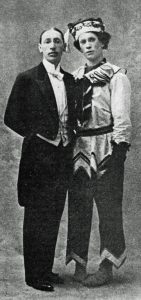
Igor Stravinsky composed The Rite of Spring for the Ballets Russes in 1912, when he was thirty years old. Even if he had never written another piece of music, Stravinsky would still be famous, because excepting perhaps Yummy, Yummy, Yummy I Got Love in My Tummy, The Rite of Spring is the single most influential piece of music composed during the twentieth century.
The Rite changed the way composers thought about rhythm, melody, counterpoint and orchestration, and it continues to exert a seminal influence on composers to this day. For all of its debt to Stravinsky’s Russian roots and the music of Claude Debussy, the Rite appeared to be devoid of any reference to the long and glorious Western musical tradition as it existed at the time. Rather, it created what appeared to be an entirely new musical language and expressive world: a world devoid of such bourgeois niceties as elegance, prettiness, and grace; a primal, sexual, violent, thrumming, pre-moral musical world in which pure rhythmic energy for its own sake became the principal musical element.
Stravinsky created this violent, “pre-moral musical world” because that was the gig, that’s what the scenario of the ballet of The Rite of Spring is about: fertility rites, contests, sun worship and human sacrifice in pagan, Bronze Age Russia. To evoke a world no one had ever seen, Stravinsky wrote music the likes of which no one had ever heard.…
Read more about the premiere and development and Dr. Bob’s prescribed recording, only on Patreon!
